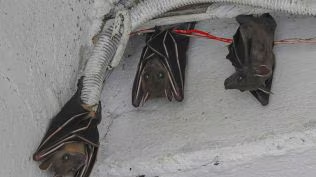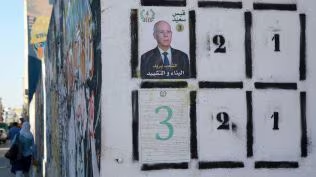The Israel-Hezbollah crisis deepened in the intervening night of Friday and Saturday as Israeli warplanes targetted residential buildings just south of Beirut in an attempt to kill Hezbollah’s leader, Hassan Nasrallah, who was convening a leadership meeting in an underground headquarters.
According to Israeli officials who spoke with The New York Times, the initial assessment of Israeli intelligence agencies, based on the number and the size of the bombs used and information gathered from inside the militant group, is that Nasrallah has been killed.

According to Lebanon’s health ministry, at least six people have been killed and more than 90 injured by the Israeli strikes on Friday evening, but the toll was expected to rise. Emergency workers were still searching through the rubble even as Israel struck again.
In case you are catching up with the developments now, here’s what has happened so far:
📌 Netanyahu’s defiant speech at UN
The latest Israeli airstrikes came moments after Israel Prime Minister Benjamin Netanyahu gave a fiery speech at the United Nations General Assembly, vowing to continue the fight against Hamas in Gaza and Hezbollah in Lebanon despite international calls for a ceasefire. He said that he had not planned to come to the meeting this year, because his country is at war, but “after I heard the lies and slanders levelled at my country by many of the speakers at this podium, I decided to come here and set the record straight.”
“Israel has every right to remove this threat and return our citizens to their home safely. And that’s exactly what we’re doing,” Netanyahu said, eliciting applause from supporters in the gallery of the General Assembly. “We’ll continue degrading Hezbollah until all our objectives are met,” he added.
Netanyahu was also seen cutting short his visit to the UN to return to Israel and take stock of the situation.
 Smoke rises from Israeli airstrikes in Beirut’s southern suburbs on Saturday. (AP Photo)
Smoke rises from Israeli airstrikes in Beirut’s southern suburbs on Saturday. (AP Photo)
📌 Fighting through the night
Strikes have intensified from both the Israeli and Lebanon sides with the explosions in Beirut being termed as the worst that the capital has seen in the last year.
The Israeli military says it struck the central headquarters of Hezbollah in Beirut. Israeli army spokesperson Rear Adm. Daniel Hagari told news agency AP that it targeted the main Hezbollah headquarters, located beneath residential buildings. Attacks on Hezbollah targets by fighter jets continued into the early hours Saturday after the army said it told residents to evacuate three buildings it was targeting.
Footage from the southern part of Beirut showed that at least at least four residential buildings on one street were destroyed on Friday night. Three of the buildings were completely flattened, while another collapsed, with the upper floors partly intact.
Videos that are being posted on social media app Telegram show several distinct smoke plumes. One that has been posted by BBC’s Nafiseh Kohnavard shows the Dahieh area in Beirut that was struck repeatedly by Israeli jets.
Smoke can be seen over Dahieh, Beirut as the area was hit again pic.twitter.com/7Fr46zQxpl
— Nafiseh Kohnavard (@nafisehkBBC) September 27, 2024
📌 The importance of Hassan Nasrallah
Hassan Nasrallah has been at the helm of Hezbollah for nearly three decades now. Under the leadership of the 64-year-old, Hezbollah has fought wars against Israel and taken part in the conflict in neighbouring Syria, helping tip the balance of power in favor of President Bashar Assad.
According to AP, Nasrallah was born in 1960 into a poor Shiite family in Beirut’s impoverished northern suburb of Sharshabouk. He studied theology and joined the Amal movement, a Shiite political and paramilitary organization, before becoming one of Hezbollah’s founders.
Hezbollah was formed by Iranian Revolutionary Guard members who came to Lebanon in the summer of 1982 to fight invading Israeli forces. It was the first group that Iran backed and used as a way to export its brand of political Islam. Nasrallah built a power base as Hezbollah became part of a cluster of Iranian-backed factions and governments known as the Axis of Resistance. It was in 1992 that Hezbollah chose Nasrallah as its secretary-general. Five years later, the United States designated Hezbollah a terrorist organization.
A day after the Israel-Hamas war started, Hezbollah began attacking Israeli military posts along the border calling it a “backup front” for Gaza. In speeches throughout the conflict, he has argued that Hezbollah’s cross-border strikes had pulled away Israeli forces that would otherwise be focused on Hamas in Gaza and insisted that Hezbollah would not halt its attacks on Israel until a cease-fire is reached in Gaza.
Disclaimer: The copyright of this article belongs to the original author. Reposting this article is solely for the purpose of information dissemination and does not constitute any investment advice. If there is any infringement, please contact us immediately. We will make corrections or deletions as necessary. Thank you.







